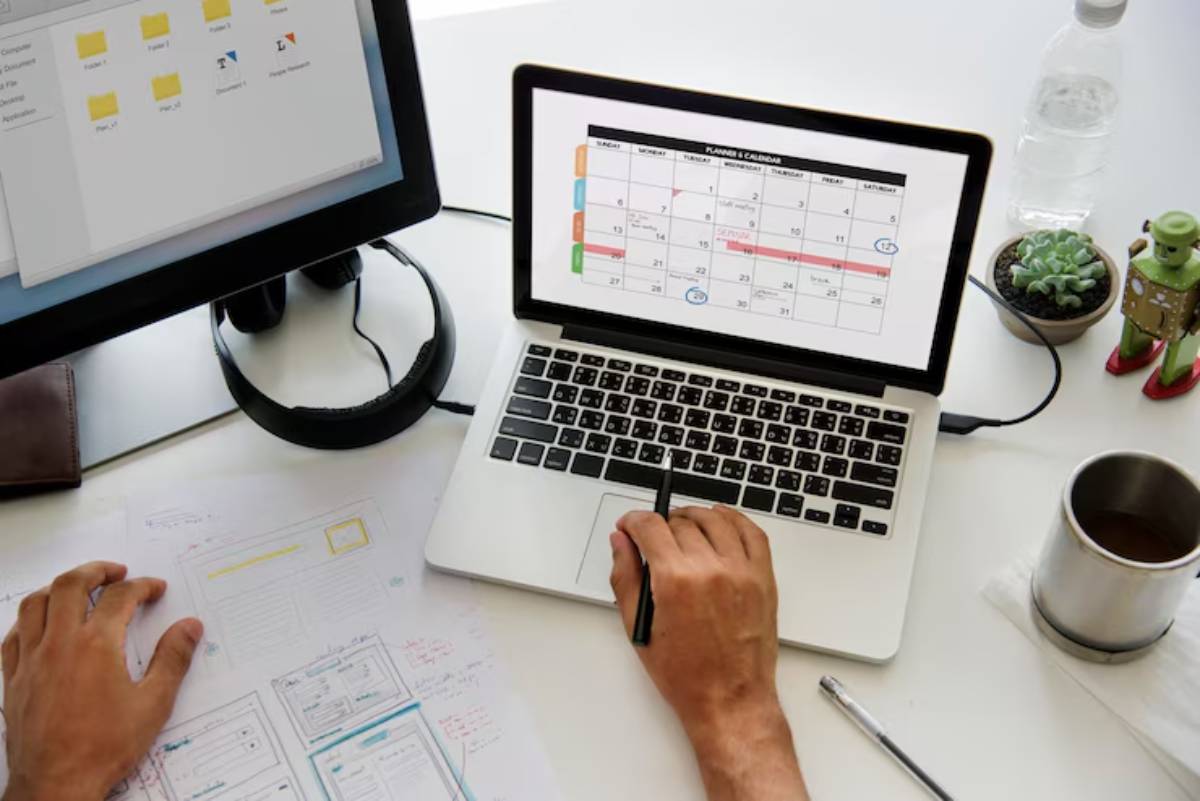
Time Blocking Around Your Circadian Rhythm
Ever wondered why some hours you’re bursting with ideas and others you’re struggling to form a coherent thought? That’s not just mood swings or caffeine withdrawals—it’s your circadian rhythm in action.
Understanding and working with your daily body clock routine can transform how you plan your day. Instead of pushing through fatigue or forcing creativity, you align your time blocks to your natural energy schedule, making work feel smoother and life more balanced.
In this in-depth guide, you’ll learn how to apply circadian time planning to optimise productivity, minimise burnout, and get more done when you’re truly at your best.
What Is the Circadian Rhythm?

Your circadian rhythm is your body’s internal 24-hour clock. It governs sleep, hormone release, digestion, alertness, and cognitive performance.
Key components include:
- Cortisol levels (wakefulness hormone)
- Melatonin release (sleep hormone)
- Core body temperature (impacts alertness)
These elements change throughout the day. They affect when you feel focused, tired, or sharp.
Why Circadian Time Planning Works
Most Schedules Ignore the Body
Typical 9-to-5 routines demand uniform output all day long. But you’re not a machine. Your energy rises and falls.
By ignoring your rhythm, you risk:
- Forcing deep work at low-energy times
- Holding meetings during creative peaks
- Skipping rest when your body needs it
When You Plan With the Rhythm
You:
- Work with your energy, not against it
- Enjoy more flow and fewer slumps
- Protect mental health and performance
The Typical Circadian Energy Curve

While everyone’s rhythm varies slightly, most people experience this general pattern:
Morning (7 AM – 10 AM): Alert & Focused
- Cortisol spikes
- Body temperature rises
- Great for deep work and analytical thinking
Midday (11 AM – 1 PM): High Productivity
- Continued cognitive focus
- Ideal for meetings, collaboration, and decision-making
Afternoon Dip (2 PM – 4 PM): Sluggish
- Body cools slightly
- Melatonin may start rising subtly
- Best for light admin or break blocks
Early Evening (5 PM – 7 PM): Second Wind
- Cognitive resurgence for some
- Good for creative work, light exercise, and reflection
Night (9 PM Onwards): Wind Down
- Melatonin rises significantly
- Focus, memory, and decision-making decline
- Ideal for rest and routine
How to Circadian Time Blocking

1: Track Your Energy
For 7 days, log your:
- Wake and sleep times
- Energy levels at 2-hour intervals
- Task performance quality
This helps you personalise your rhythm instead of relying solely on general data. Learn how to match tasks to energy peaks.
2: Map Your High, Mid, and Low Points
- Use colour codes (e.g., green = peak, yellow = steady, red = dip)
- Overlay tasks like meetings, deep work, errands
3: Categorise Tasks by Cognitive Demand
- High Cognitive Load: Writing, strategy, analysis
- Medium: Meetings, collaboration, routine tasks
- Low: Admin, email, data entry, passive learning
4: Align Tasks to Energy
- Morning peaks: Tackle complex work
- Afternoon dips: Schedule breaks or repetitive tasks
- Evening surges: Reflective tasks or planning for tomorrow
5: Use Tech and Tools to Support It
- Google Calendar: Colour-coded blocks
- Reclaim.ai: Syncs with productivity rhythms
- Notion/Sunsama: Plan tasks in tune with energy blocks
Sample Circadian Time Block Schedule
For a Morning Chronotype (Early Riser):
- 7:30–9:30 AM: Deep Work (e.g., research, creative writing)
- 9:30–10:00 AM: Admin / Emails
- 10:00–11:30 AM: Meetings / Strategy
- 12:00–1:00 PM: Lunch / Walk
- 1:00–2:30 PM: Light Tasks (e.g., documentation)
- 3:00–4:00 PM: Catch-up or Flex Block
- 5:00–6:00 PM: Workout / Creative side projects
For a Night Owl:
- 9:00–10:00 AM: Admin or planning
- 11:00 AM – 1:00 PM: Moderate tasks
- 2:00–3:30 PM: Collaboration or meetings
- 4:00–6:00 PM: Deep Work (peak energy)
- 7:00–9:00 PM: Creative / Strategy
- 10:00 PM: Wind down and prepare for sleep
Adjusting for Different Lifestyles
Shift Workers
- Anchor your rhythm to your wake time, not the clock
- Track alertness over days off and on
- Protect recovery sleep
Parents & Caregivers
- Use micro-blocking: 20–40 min focus blocks
- Identify 1–2 daily peak pockets for meaningful work
Hybrid or Remote Workers
- Build in movement and daylight exposure
- Use calendar integrations to defend peak hours
Benefits of Circadian-Aligned Time Blocking
- Improved focus and retention
- Reduced cognitive fatigue
- Enhanced creativity during optimal windows
- Better sleep and recovery
- Less stress and scheduling guilt
This approach also naturally promotes work-life balance since you stop pushing during dips and start honouring body cues.
Pitfalls to Watch Out For
Expecting Consistency Every Day
Energy varies. Don’t overcommit just because Tuesday went well.
Forgetting External Factors
Poor sleep, heavy meals, stress, and screen exposure can shift your rhythm.
Overscheduling High-Energy Blocks
Leave space for overflow or task switching
Using Someone Else’s Template
Your rhythm is unique. Tailor, test, and adapt.
Real-World Example: Marcus the Developer
Marcus was always exhausted by 2 PM. His to-do list suffered.
Problem: He was doing code reviews—a focus-heavy task—after lunch.
Fix:
- Tracked alertness
- Moved deep coding to 9–11 AM
- Scheduled admin and light meetings in the afternoon
Result:
- 30% faster code delivery
- Fewer bugs
- Evenings free for hobbies
Common Concerns About Time Blocking Around Your Circadian Rhythm
What if my workplace sets rigid hours? Identify your 1–2 peak hours and protect them. Use flex time, when available, to shift demanding tasks to those periods.
How does this work with children? Use their nap/school times as anchors. Match your high-energy tasks to these blocks.
Can this improve sleep, too? Yes. Honouring circadian dips reduces evening overstimulation, helping melatonin release naturally.
Conclusion: Work With Your Body, Not Against It
Circadian time blocking isn’t just another trend. It’s a smarter, more humane way to plan your life.
When you align your daily body clock routine with your calendar, you stop fighting your biology. You feel more in flow, get more meaningful work done, and preserve your energy for what matters outside work, too.
Try it now:
- Track your energy for 3 days
- Identify 1 peak and 1 dip
- Move 1 high-focus task to your peak
Want to deepen your system? Explore how to add buffer blocks to support your rhythm.


